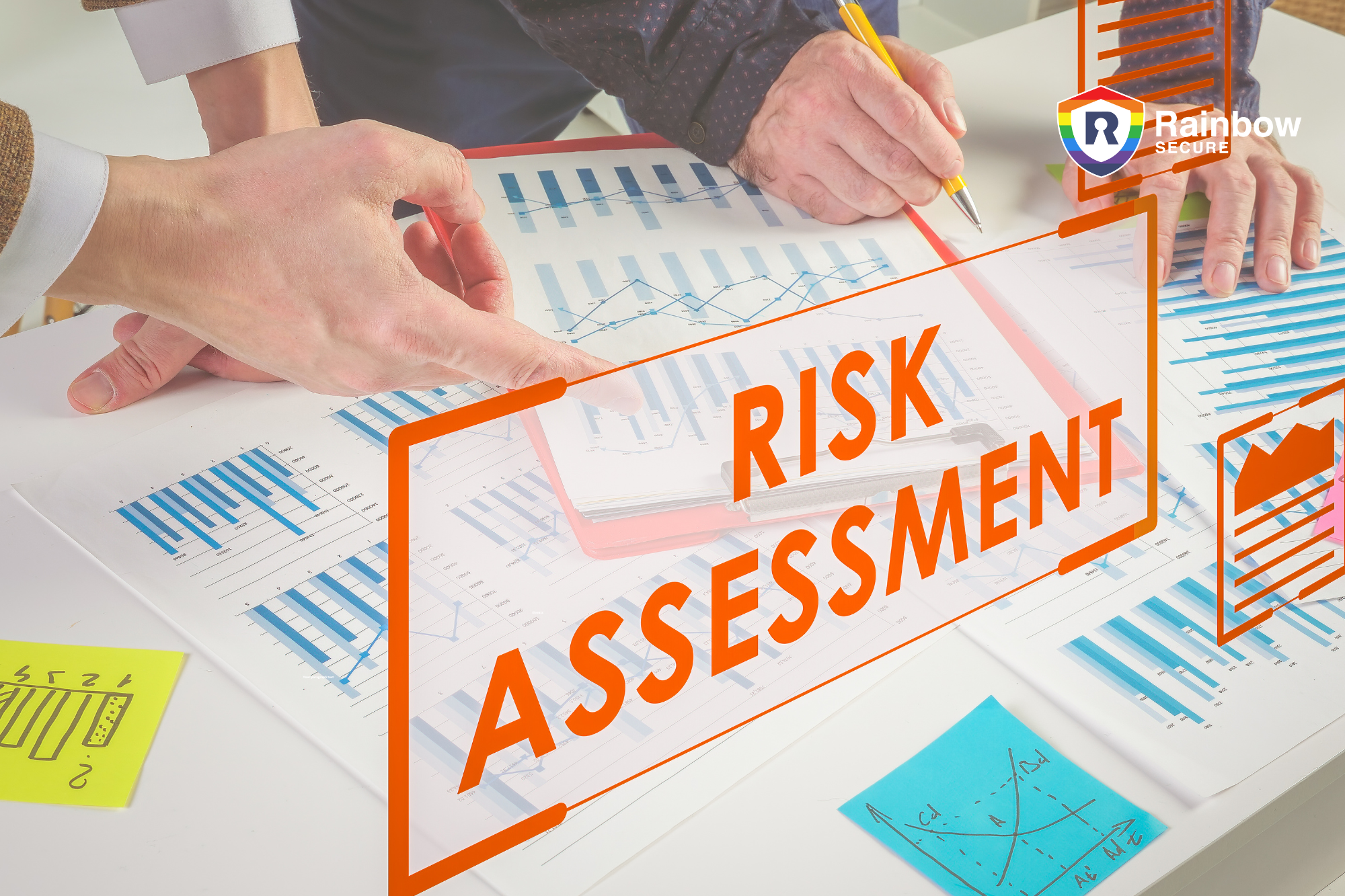IT risk assessments are crucial to ensure cybersecurity and information security risk management in all organizations. By recognizing potential threats to your IT systems, data, and other resources, and comprehending their potential business impact, you can prioritize your efforts to prevent costly business disruptions, data breaches, compliance penalties, and other harmful effects.
Insecure design, software, and data integrity failures, as well as server-side request forgery, have been added to the OWASP’s list of common attack types. This update highlights the ever-changing nature of security and the importance of being aware of current threat actor tactics and techniques. By staying up to date, you can be better equipped to handle these types of risks.
In this article, you will read about:
An overview of IT Risk Assessments and Security Risk Assessments
Industries That Require Security Risk Assessment for Compliance
Advantages of Conducting Security Risk Assessments
Steps in a Security Risk Assessment
How can Rainbow Secure help?
An Overview of IT Risk Assessments and Security Risk Assessments
A security risk assessment is a process that involves identifying vulnerabilities in an IT ecosystem and evaluating their potential financial impact on an organization. This includes factors like downtime, lost profit, legal fees, and compliance penalties, customer churn, and lost business. By conducting a comprehensive risk assessment, you can prioritize your security efforts as part of your overall cybersecurity program.
Security risk assessments are part of a broader process known as IT risk assessment, which considers a wide range of cyber risks beyond cybersecurity threats. The Institute of Risk Management defines cyber risk as “any risk of financial loss, disruption, or damage to the reputation of an organization from some sort of failure of its information technology systems.” Similarly, Gartner defines cyber risk as the potential for an unplanned, negative business outcome involving the failure or misuse of IT.
Examples of cyber risks that IT risk assessments should consider include exfiltration of sensitive data, compromised credentials, phishing attacks, denial-of-service attacks, supply chain attacks, misconfigured settings, hardware failures, natural disasters, and human errors.
It is important to note that both types of risk assessments are ongoing processes and not one-time events. Due to the constantly changing nature of IT environments and attack methodologies, regular assessments are necessary. The benefits and procedures outlined above apply to both IT risk assessments and security risk assessments.
Industries That Require Security Risk Assessment for Compliance
Organizations handling personally identifiable information (PII) or personal health information (PHI) are required to conduct a security risk assessment. This includes confidential information such as social security numbers, tax identification numbers, passport details, medical history, and more, that are obtained from customers, partners or clients.
There are several laws, regulations, and standards that mandate risk assessments. These include HIPAA, PCI-DSS, Sarbanes-Oxley Audit Standard 5, the Massachusetts General Law Chapter 93H 201 CMR 17.00 regulation, and the Federal Information Security Management Act (FISMA).
Adherence to these regulations is critical for maintaining a unified set of security controls. These controls are implemented across various industries and provide a platform to assess an organization’s overall security posture. It is recommended by governing entities to perform an assessment for any asset containing confidential data. It is advisable to conduct assessments twice a year, annually, or at any major release or update.
Advantages of Conducting Security Risk Assessments
IT risk assessments and cybersecurity risk assessments provide a significant amount of value to organizations. Here are some key benefits to consider:
- Identification of crucial IT assets
Some data stores, machines, and IT assets are more valuable than others. Since the details of your IT assets and their value can change over time, it’s essential to conduct regular risk assessments to remain updated.
- Understanding of risk
By identifying and analyzing potential threats to your business, you can prioritize risks that are most likely to have a significant impact.
- Identification and remediation of vulnerabilities
Adopting a gap-focused IT risk assessment approach can help you identify and fix vulnerabilities that threat actors can exploit. For instance, unpatched software, overly permissive access policies, and unencrypted data.
- Cost reduction
Conducting a security risk assessment not only protects your business from the high cost of a data breach, but it also allows the wise use of security budget for initiatives that deliver the most value.
- Regulatory compliance
Regular security risk assessments can help organizations comply with data security mandates such as HIPAA, PCI DSS, SOX, and GDPR, thereby avoiding costly fines and penalties.
- Improved customer trust
Demonstrating a commitment to security can increase customer trust, which can lead to improved client retention.
- Informed decision-making
Detailed insights provided by a cybersecurity risk assessment can facilitate better decision-making regarding security, infrastructure, and personnel investments.
Steps in a Security Risk Assessment
Now let’s discuss the steps in a proper security risk assessment. Note that while larger entities may task their internal IT teams with this process, organizations without a dedicated IT department could benefit from delegating it to an external specialist.
The following are the steps to conduct a thorough security risk assessment:
- Identify and prioritize IT assets, such as servers, laptops, and data.
- Identify potential threats, including malware and malicious user activity.
- Identify vulnerabilities by analyzing audit reports, vulnerability databases, and penetration testing.
- Analyze existing controls, such as intrusion detection systems and security policies.
- Determine the probability of an incident occurring.
- Assess the potential impact of a threat on critical assets.
- Prioritize risks based on the likelihood and potential impact.
- Recommend controls to mitigate identified risks.
- Document assessment results in a comprehensive report for management. Note that smaller organizations without an internal IT team can delegate this process to an external specialist. Lets discuss the steps for risk assessment in detail here:
Step 1. Identify and Prioritize IT Assets
When identifying IT assets, consult with all departments and business units to ensure a complete understanding of the organization’s systems and data. Classify assets based on criteria such as monetary value, role in critical processes, and legal and compliance status.
Step 2. Identify Threats
Threats can come from multiple sources, including outside actors, malicious user activity, and insufficiently trained administrators.
Step 3. Identify Vulnerabilities
Vulnerabilities can be identified through various means, such as analysis, audit reports, and penetration testing.
Step 4. Analyze Existing Controls
Analyze both technical and non-technical controls in place, such as encryption and security policies, to thwart attacks and detect threats.
Step 5. Determine the Likelihood of an Incident
Assess the probability of each vulnerability being exploited based on the nature of the vulnerability, threat source capacity and intent, and control efficacy.
Step 6. Assess the Impact a Threat Could Have
Assess the potential consequences of a threat compromising or losing an asset by analyzing factors such as its value, sensitivity, and role in critical processes.
Step 7. Prioritize the Risks
Determine the level of risk for each threat/vulnerability pair based on the likelihood of the threat occurring, the cost of each occurrence, and the adequacy of existing controls.
Step 8. Recommend Controls
Based on the risk level, develop a plan to mitigate threats. High-risk threats require immediate corrective action, medium-risk threats require corrective action within a reasonable timeframe, and low-risk threats can either be accepted or addressed.
Step 9. Document the Results
Compile a comprehensive report for management outlining the identified threats, vulnerabilities, at-risk assets, probability of occurrence, potential impact, and recommended controls and costs. The report should also include key remediation steps that can mitigate multiple risks.
It is important to note that security risk assessment is not a one-time project, but rather an ongoing process that should be conducted at least once every two years. Continuous assessment provides an organization with an up-to-date snapshot of risks and threats it is exposed to.
There are also some common risk management strategies such as:
- Acceptance: Avoiding disruption to business continuity by accepting the risk
- Avoidance: Creating a plan to eliminate the risk altogether
- Transference: Transferring the risk to a third party to manage
- Mitigation: Reducing the impact of a known risk
In addition to these strategies, organizations also employ risk management processes based on widely accepted frameworks to safeguard digital and physical assets.
A security risk assessment is a critical activity for organizations. It offers the following benefits:
- Identification of organizational assets such as network, servers, applications, data centers, tools, etc.
- Creation of risk profiles for each asset.
- Understanding of the data that is stored, transmitted and generated by each asset.
- Assessment of asset criticality, which includes the impact on revenue, reputation, and the probability of exploitation.
- Risk ranking for each asset and prioritization for assessment.
- Implementation of mitigating controls for each asset based on the assessment results.
How can Rainbow Secure help?
Right amount of data and system access to right person or role at right time is the key to organizations being able to use digital tools and platforms to serve the customer base and stay compliant.
Next Generation Rainbow Secure platform is a modern identity authentication (MFA) and single sign- on (SSO) solution for your business across on-premises and cloud environments. It’s backed by an experienced team of cloud and security experts, years of innovation, and partnerships with leading cloud platforms. Rainbow Secure is a Leader in Smart and Secure Digital Solutions that work for you.
Insider Threats: Rainbow Secure assists in mitigating insider threats by implementing access controls, user monitoring, and privilege management solutions. Also, if the user leaves behind unlocked devices, saved passwords in the password manager or browser can be misused by malicious insiders. Interactive login security from Rainbow Secure helps prevents unauthorized access and protects against data theft or misuse by privileged users.
ChatGPT Security for business: Secure your ChatGPT login and Data with Rainbow Secure MFA Plugin.
Secure AI Integration: Consult Rainbow Secure Team to integrate AI in your business workflows powered by Azure and Rainbow Secure API.
Secure Workforce & Customer login: Use Authentication Plug-in by Rainbow Secure to secure workforce and customer logins. In this plug-in, you get a multi-dimensional password, passwordless login solutions with AI monitoring, Risk Analytics, and location fencing.
IoT Friendly Security: IoT platform developers can secure their cloud endpoints, and user logins (both admin and customer) against unauthorized access and scripted malware attacks using easy to adapt and support multi-layer interactive rainbow secure authentication solutions and services that includes but not limited to security assessment, API Security, secure user onboarding, and risk analytics.
Secure Data and its Backups We provide Cloud based data vault and data archive solutions backed by Microsoft Azure and secured by our authentication plugin and industry best practices to give you ransomware protection, help with data governance and disaster mitigation.
Database Security We provide technical consulting services to Secure Databases in cloud and on premise. You get best protection for your data in databases using native and third-party security tools.
Meet Compliance Requirements: Use Authentication Plug-in by Rainbow Secure with your business application and in SSO (Single Sign-on) and meet industry standards and compliance regulations such as NIST, ISO, FTC, SOX, SOC2, CMMC, CMMI, HIPAA, PCI, and others.
Securely communicate and Collaborate: Use Secure Business Email by Rainbow Secure and get protection against account takeover, phishing, ransomware, and automated login cyber frauds. In this email, you get options to send encrypted emails, single sign-on with Office 365, and Google, and 1 TB one drive storage.
Connect Business applications: Get one unified login using Rainbow Secure Single Sign-On
Manage User Onboarding / Offboarding using Rainbow Secure IAM
Verify User using Smart Multi-factor MFA. Smart Multi-Factor Authentication from Rainbow Secure which adjusts to your use case, reduces the cyber liabilities of a business from stolen credentials and improves productivity, and enhances user experience.
Do you have more questions about how Rainbow Secure innovative solutions help transform you enhance your IoT security posture and safeguard your business? Contact us today. Email us at Hello@rainbowsecure.com






